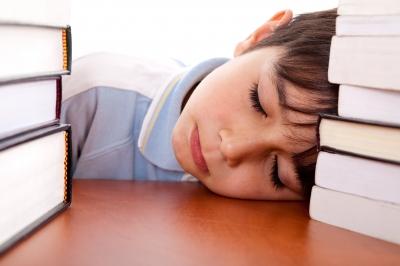ADHD And Learning – Do You Know How YOUR Child Learns?
When we talk about ADHD and learning, we are usually thinking about all the problems associated with distraction, impulsivity and lack of focus and we think that these are the overriding factors which will determine a child’s learning. Well, that is a very shallow approach and really only the tip of the iceberg as I shall show in this post.
Obstacles to learning
The problems associated with ADHD that I have mentioned above are really brakes on learning and there is no doubt that these are handicaps in the whole process. But what if we knew a little more about the different learning styles of children? Could we not apply them to our own child, once we are aware of how she learns? That would be a fantastic help and I only hope that teachers are aware of these different learning styles because this is really the key to success in academic achievement for our ADHD kids. Too often, this is forgotten or simply not known.
The three different learning styles
As regards learning styles in general, most people know that children may learn better with visual images, (visual) or through listening (auditory) or simply through touching and doing manual tasks (kinaesthetic). A child may be predominantly visual or auditory learner but that does not mean he never uses the others. He may be using all three although usually one style will be the one he uses most. Some experts maintain that an ADHD child has to use all three as the problems of distraction and lack of focus forces them to use everything that he has got.
Observe your child
If you want to find out which learning style your child has, you could ask his teacher if she has noted anything. It is unlikely although she may be able to give you some hints. For example, if your child sits at the front of the class and follows all her movements, he may well be more visually and/or kinaesthetically oriented.
The best way of all is to observe your child playing and then that will help you to decide. You can then tell his teacher and liaising generally will be a great help to everybody.
Some ideas to help you understand your child’s learning style.
- Your child likes reading to discover things but also loves watching people doing things before he actually tries them. These are visually oriented children and they tend to be creative, have good handwriting and may be better at drawing . They are also quite pernickety about how they present their work.
- Ask them how good they are at remembering people’s names and faces. If they are visually inclined, they will usually be able to remember the face but might have some problems with the names. Give them a problem to solve and if they use their eyes a lot then this is another indication that they may be visual
- As regards the auditory learning style, kids with this as the predominant trait usually learn best through listening. They may talk a lot to themselves while doing a task and they are easily distracted. They tend to be attracted to colours, may favour music and they usually have a wider range of vocabulary than you would expect. They would benefit greatly from listening to recorded lessons if that were possible. They certainly benefit from listening to audio books and so on.
- If your child touches things and people a lot this may well be an indication that the kinaesthetic style is dominant here. They may be really good at sports, like making things and also be good at spelling. They also tend to be much more hyperactive and restless than you would expect. If the child has ADHD and a kinaesthetic learning style, then that is going to be a real challenge!
- Watch your child at play. Look at the toys he prefers and the games he plays. This may provide other clues whether he is visual, auditory or kinaesthetic.
As regards ADHD children we need to be aware of certain things regardless of their learning styles. It is now proven scientifically that most kids need a secondary physical activity when they are trying to focus. This applies to adults too when we start to doodle while concentrating . A great idea is to get a wiggly seat or stability ball for them when they have to do homework. So, ‘sit still’ here is a counterproductive order.
If we paid a lot more attention to how our children learn and realize that the roles of music, games and physical movement are essential tools in helping a child’s brain develop instead of relying on stimulant drugs, then we would do our children a great favour.
Robert Locke MBE is an award winning author and has written extensively on ADHD and related parenting problems. You can visit his blog on problem kids to find out more.



